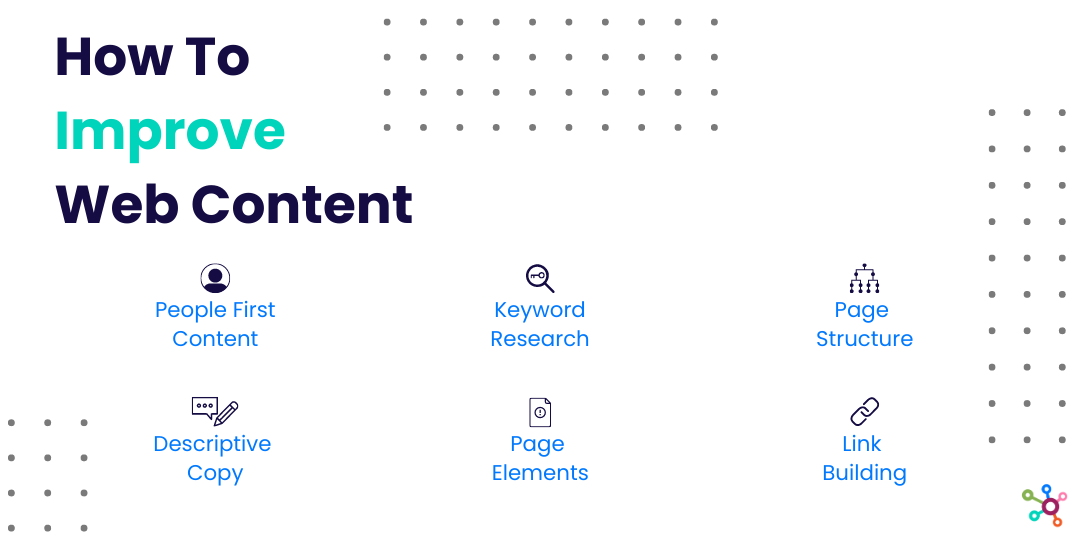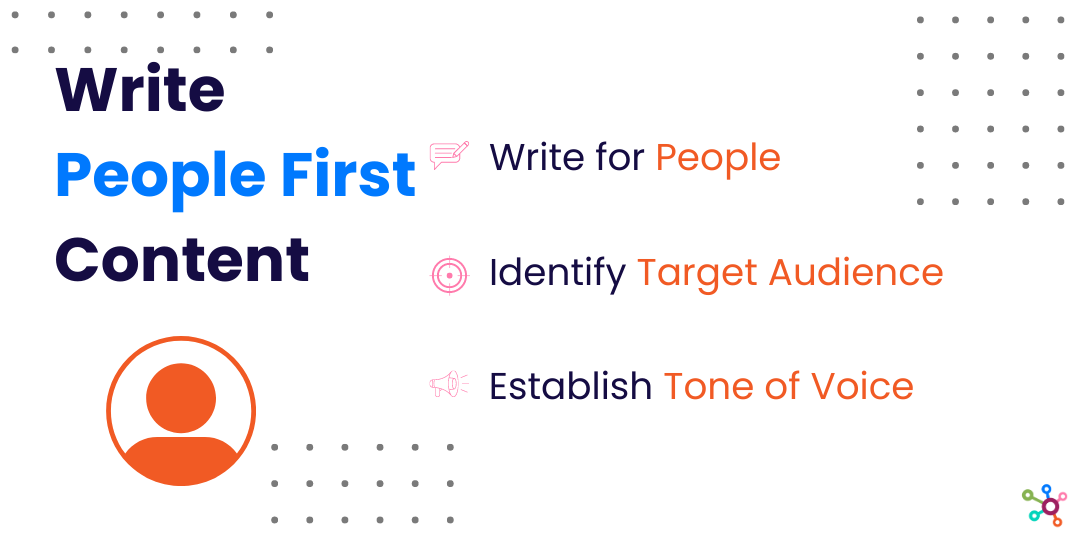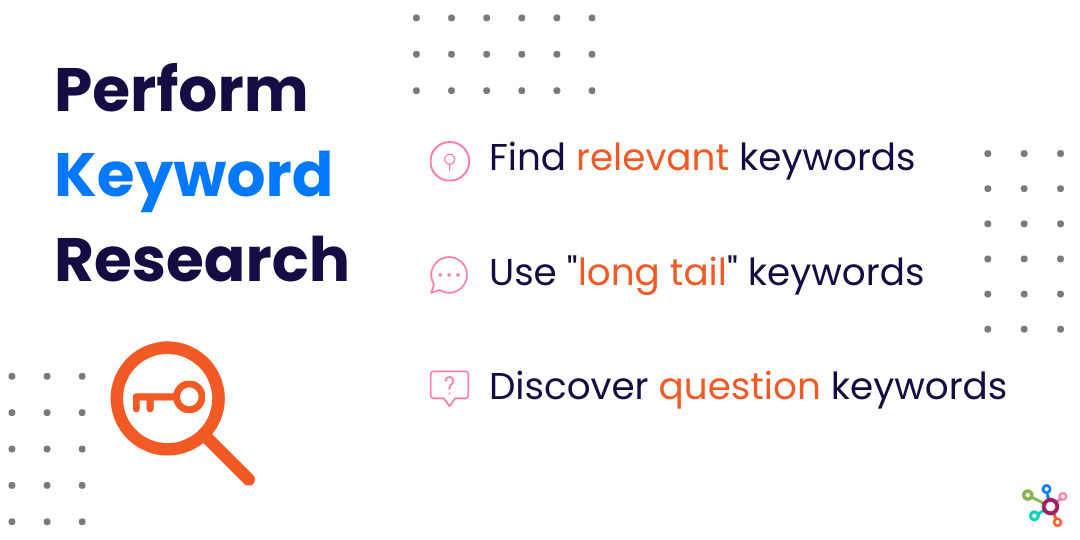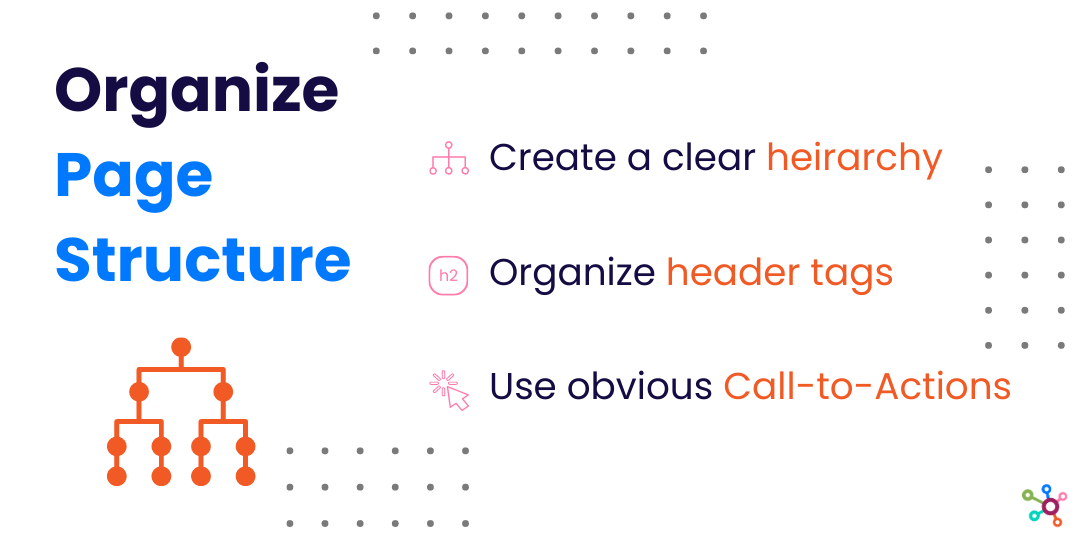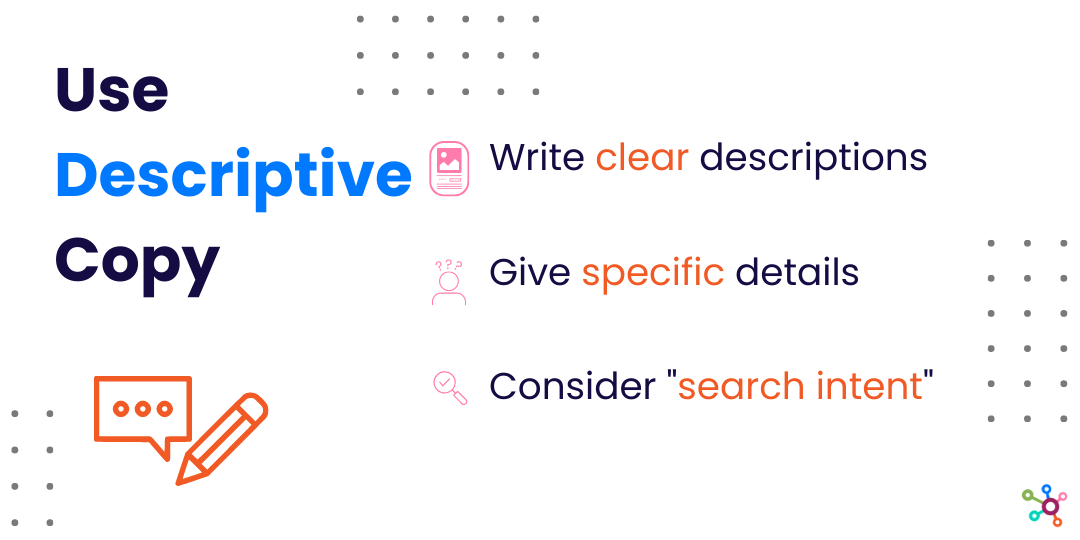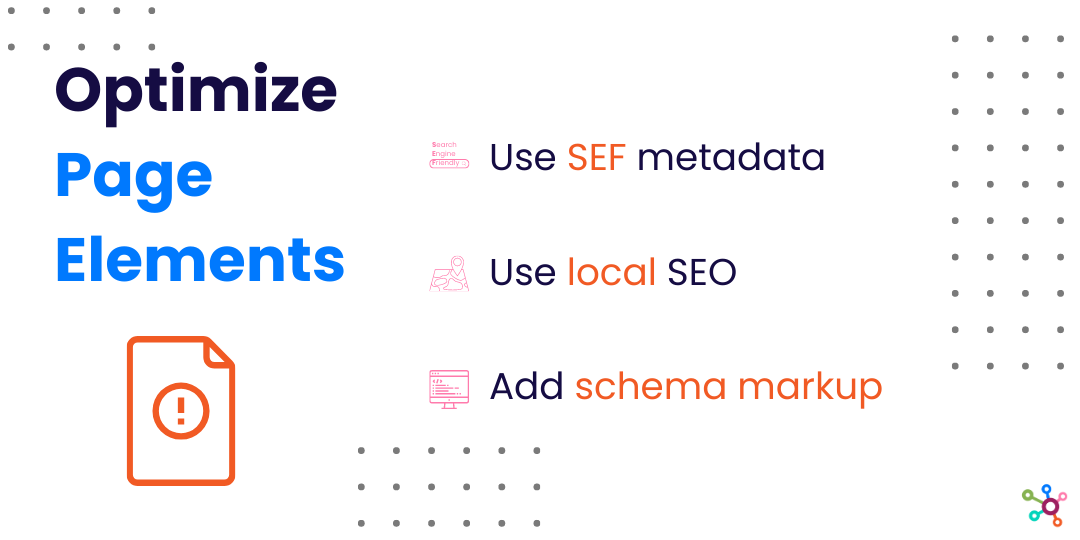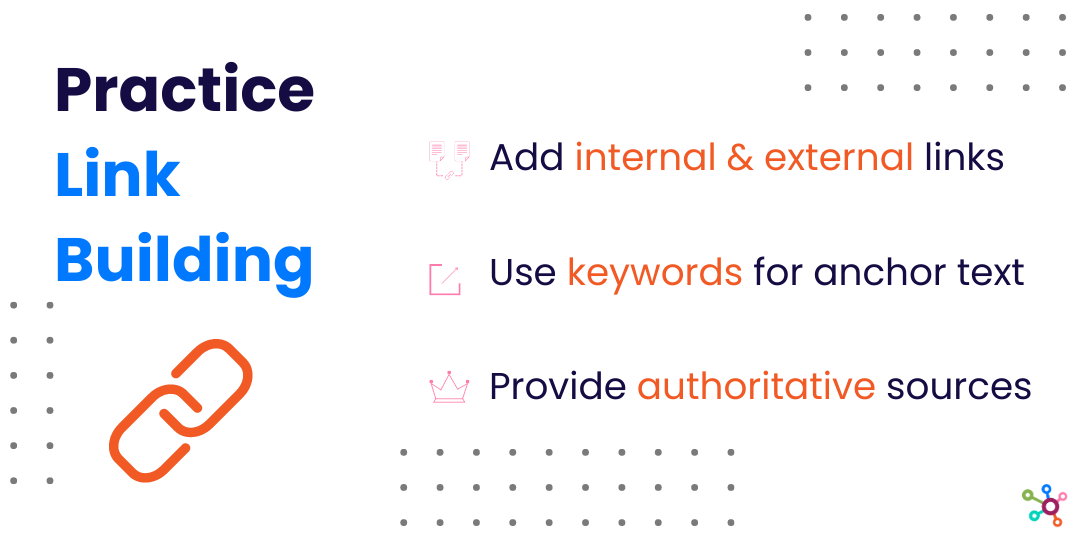How to Improve Website Content
With all the information out there on what SEO is, and how to rank on Google, you might find yourself drifting without direction. It’s a challenge to get your site on a search engine results page if you don’t know where to start. So, here’s the first thing you need to know: relevant website content and the copy is the main driver of ranking in search result pages.
Okay, but how do you know if your copy is relevant? While there are plenty of articles about what people think is relevant, Google gives us a little insight into what they (and other search engines) are looking for with a few tips and updates. This includes the “Helpful Content” update that aims to gauge how useful the content of your site is.
How can you start writing useful content? The simple answer (provided by Google itself); write for people. We know that alone raises more questions than answers. That’s why we’ve listed 6 key writing tips to guide you on how to write website content.
Write “People-First” Content
If you take away absolutely nothing else, remember to write for people, not search engines. Google has made it clear in the past and most recently in their “helpful content” update, that people come first. Search engines will penalize a site that is clearly writing to rank instead of serving content that users enjoy. So, to avoid your page from getting lost on SERPs (search engine results pages), make sure to write all your website content with your target audience in mind.
Understanding Your Target Audience
Before you ever put pen to paper you need to know who your target audience is and how to reach them. Are they millennials in the workforce that are renting an apartment with a few roommates? Do they prefer pets to kids? Is your product or service more likely to attract homeowners with dual-income households and small children?
Narrowing down your target audience as much as possible will help you speak to them at their level. You can center your tone to match your consumer’s language, sentence structure, and dialect. All these small details will help you on your path to CyberMark’s 3 Steps to SEO Success; rank, click, and convert.
Use Relevant Keywords
Keyword research is extremely relevant to strong pieces of content. Search engine algorithms rely on important words and phrases in your web content to help serve the consumer the information they’re looking for. This includes search intent, location, and past queries.
Do some keyword research before writing any website content. Make sure the keywords you use are relevant to your brand and have a high search volume. You need to consider both the user and search engines when performing keyword research.
How to Research Keywords
Okay, this is all great information, but how can you do keyword research? The folks at Backlinko offer a few of their Top Keyword Research tools but there are plenty to choose from. These tools provide amazing insights on search volume (how often keywords are searched monthly), intent, and closely related terms. Select a few words that are relevant to your brand and type them into your new keyword tool.
You can also type your product or service directly into a search engine and see what pops up. This should give you plenty of ideas to work into your web copy. Keep in mind, using popular words and phrases should sound natural and not forced.
You can use a free version of Google Analytics to get a general overview of what audience you’re attracting and the keywords you’re currently ranking for. There are also more in-depth SEO tools from SEMRush that can point you in the right direction.
Long Tail Keywords✔
Using long tail phrases can help users that are looking for a specific service or product like “organic slime for kids”. This also helps your chances to rank for more specific SERPs instead of being buried for single keyword searches like “slime”.
Question Keywords✔
Answering popular questions that are relevant to your product or service helps you rank for more specific SERPs and increases your chances of being featured as a “rich snippet”. Even if you’re not the first answer that pops up, you might still have a chance to appear under the “People also ask:” section of a SERP. Question keywords include things like “how to make organic slime”, or “what is slime made of?”.
While “where to find organic slime” is great to catch consumers typing on their phones, using “Where can I find organic slime?” is also beneficial for voice search. Many consumers are using voice assistants like Alexa, Siri, and more to search for desired products and services. With the freedom to speak search queries, consumers tend to use longer phrases and questions for voice queries.
Keyword Stuffing❌
While we all love keywords in the SEO world, search engines are not fond of “stuffing”. Keyword stuffing is the overuse of a word or phrase to improve google rankings, or other popular search engine rankings. Though this SEO strategy might seem useful, it creates a poor user experience and decreases your chances of appearing on popular search results.
Duplicate Content❌
First-timers and less experienced writers may be tempted to steal information from pages that are ranking well in their industry. This practice is frowned upon and may even result in your website being penalized. Penalized content means your page will be blocked from showing up on search result pages.
With this said, there’s still no harm in analyzing competitor content. Paying attention to the structure and topics of competitor sites can be extremely helpful when curating website content for your own site.
(Of course, you can always hand the task off to the professionals at CyberMark who live and breathe SEO!)
Organize Your Page Structure
Now that you’ve done a deep dive into what your target audience is searching for and what types of content they want to see, it’s time to organize. Composing an easy-to-follow structure for your pages is both important for users and search engines. Creating a clear hierarchy and call-to-action for your pages improves user experience and your chances of ranking.
For your entire website, this means having a clear sitemap that shows search engines what your site is about and the topics you cover. For page content, this means organizing your headers.
Page Headers
Wait a second, what is a header? Header tags tell users and search engines the exact topic, or subtopic, you’re about to discuss. At the very least you need an “H1” to let users and search engines know what your page is about.
Here’s a quick look at headers tags:
- H1: The main subject of a page
- H2: A section of the page
- H3: A subtopic within a section
Breaking your text up with clearly organized headers makes it easier for both users and search engines to consume. Page headers are exciting, and tempting to use for style purposes, but it’s not recommended. Use header tags to clearly organize your blog post or service page like a chapter book or instruction guide.
This means when you write your blog on “how to make organic slime”, don’t use an “h2” for steps then list directions as an “h3” underneath because the font looks nice. Poor structure isn’t just confusing to read, it also makes crawling your site difficult.
What do you mean by “crawling my site”? Popular search engines like Google use your page structure to “crawl” your website and determine if you actually serve “helpful content”. This essentially means a bot will index all your pages, headers, and content to see if it’s relevant for specific SERPs. Learn more about how Google crawls your website content and how to test it.
Create Descriptive Copy
Once you have your structure in place, it’s time to start writing the actual content. As we mentioned earlier, Google gives preferred treatment to “people writing for people”. Be descriptive when describing your product or service and avoid vague explanations.
Focus on the key benefits they provide. And establish search intent. We’ve mentioned “search intent” a few times, and this is a great place to talk about it as this component could affect your bounce rate.
Search Intent
To put it simply: what are consumers looking for when they type a search query? Even if you managed to rank on the top of “Nickelodeon Slime”, the user is going to click right back out of your site the second they realize you don’t offer the product they’re looking for.
Search intent is a key component to establishing keywords and writing strong web content. After writing a content piece, read it from a consumer’s perspective. A parent that’s looking for organic slime that won’t harm their child wants to know specific information like what ingredient you use.
Thinking from both a user experience and search engine perspective is vital to boost rankings, increasing click-through rates, and converting sales.
Here are a few questions to ask before posting content:
- Did I answer a question or solve a problem?
- Is this easy for my audience to digest?
- Am I using the right language and tone for my customers?
- Does this structure make sense to my clients?
- Have I included keywords and phrases that my target audience uses?
After answering these questions reevaluate your content and revise it if necessary. You want your audience to understand your language and clearly comprehend the services, products, and information you offer.
Add On-Page Elements
Write search engine-friendly page titles, headers, and descriptions to help Google understand what your page is about. It’s also the first thing users see when they enter a search query about your services. These elements are similar to window advertisements at your brick-and-mortar store.
These elements include things like title tags, meta descriptions, schema markup, and local SEO. Hearing all these components listed one after the other can sound intimidating. But don’t fret, the CyberMark team is here to break them down for you.
Page Title Tags
The title tag for your webpage is clearly displayed in search results as well as at the top of the tab when a user opens your site. A strong title tag not only shows Google what your page is about but also catches the user’s eye like a good book title.
Meta Descriptions
The meta description is much like the blurb at the back of the book cover. This is where you should give a quick summary of what your page is about. While this information resides on the backend of a webpage, it is read by bots and AI crawlers and is often served as the page description in search results.
Schema Markup
Schema markup is backend structured data that you can add to your website’s code specifically for search engines. While structuring your page headers see if you can add “schema markup” to your content. Adding this makes crawling your website easier and gives your site a chance to be featured as a “rich snippet” on SERPS.
Maybe you have a “How-To” blog post or FAQ page that answers important questions about your slime products. These are great places to add schema markup and are two of the specific page types that Google features on result pages.
Some other pages that Google might feature include:
- Articles
- Recipes
- Events
- Local Businesses
Keep in mind that adding this markup gives you a “chance” to be featured but isn’t guaranteed. However, Google has specifically mentioned that adding this type of structured data does positively impact its ability to crawl your site.
Local SEO
Localizing your copy tells your potential clients where to find you. If you’re a small, brick-and-mortar shop in Sedona, Arizona, it makes zero sense for you to show up in the SERP of a user out in Utah. Add terms to your title tags like “Organic Slime in Arizona”.
Continue to add local bits of copy in your main content as well. This helps users that are looking for things like “Slime shops near me”. SEO works by serving the user your products and services on a silver platter.
Build Links
Link building is another component that is both relevant to your audience and search engines. Add links to both internal and external pages to show both users and search engines that you know what you’re talking about. You can link to sources that you used to develop your content or pages that also offer helpful content on your topic. Social media and blogs provide perfect opportunities to link back to your newly created content.
When used properly, you can elevate your rankings on search engines, increase your click-through rate, and gain potential clients. Of course, SEO is an infinite task that needs consistent maintenance. If you need assistance with your local optimizations, check out the SEO services at CyberMark.
CyberMark offers Search Engine Optimization services to small businesses and franchises nationwide. Contact the marketing team at CyberMark by calling 623.889.3380 to hear more about our services and how we can get you ranked on Google.




